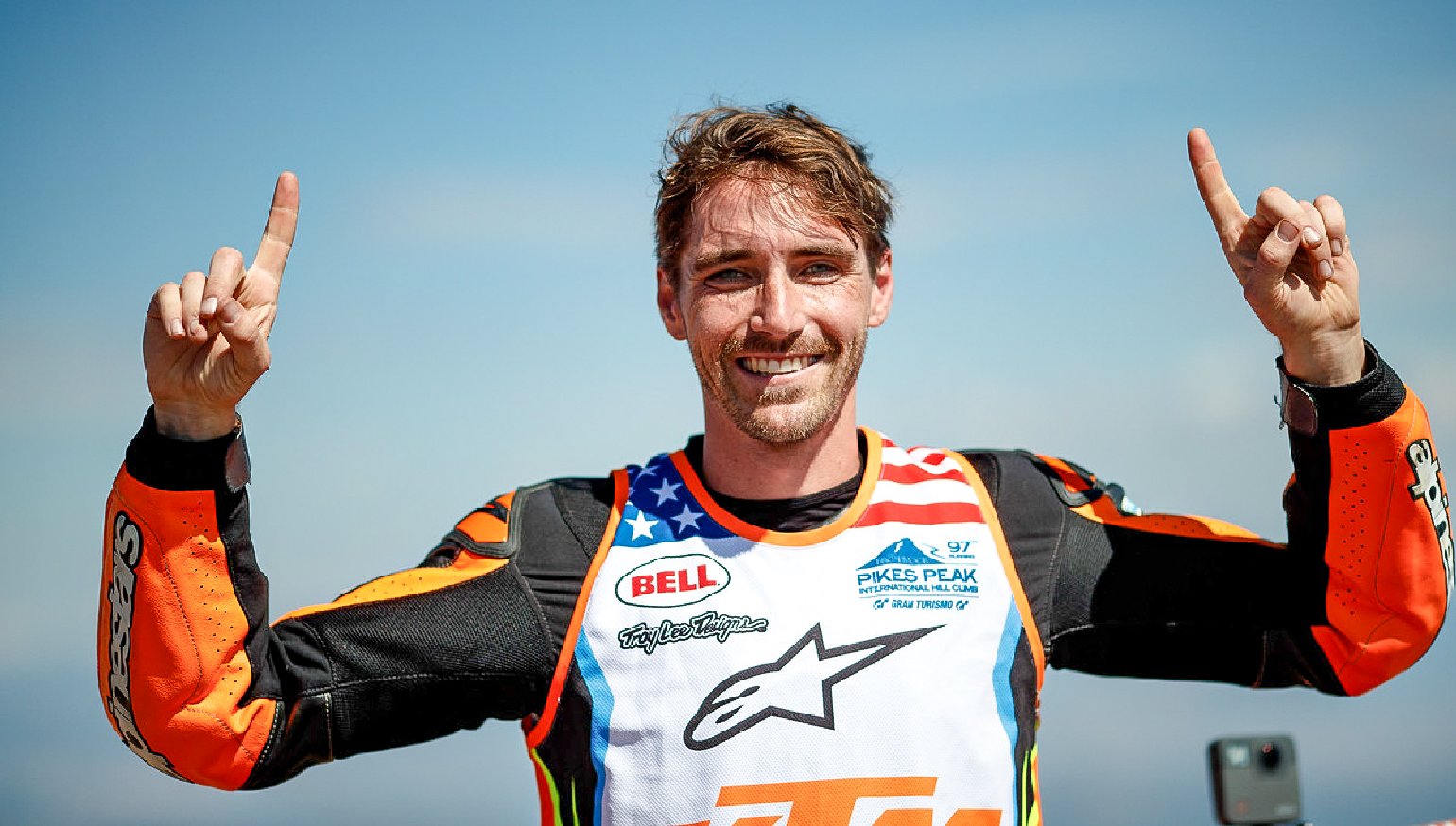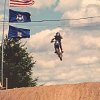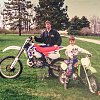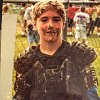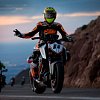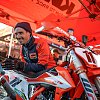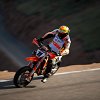For season two of our video podcast series Highside/Lowside, we’re adding value to the podcast by including interviews with interesting people in the motorcycle industry, and this weekend’s episode features multi-talented motorcycle racer and industry insider Chris Fillmore.
Born in Michigan, Chris got his start racing motocross before launching a professional racing career with seven years in the AMA Pro Supermoto series and five in the AMA Superbike, campaigning KTMs all the way. In 2017, he kicked off three record-breaking years at the Pikes Peak International Hill Climb, starting with a record-breaking run for fastest motorcycle up the mountain in his rookie year.
To catch the full interview, make sure you listen here, or download Episode Two of Season Two of Highside/Lowside. Just type in “RevZilla” to Apple iTunes or your favorite podcasting app.
Here’s an excerpt of the longer discussion, ranging from his start in racing to motorcycles being banned from Pikes Peak.
Spurgeon Dunbar: What got you into riding motorcycles?
Chris Fillmore: Well, I have to give all that credit to my father. He grew up on motorcycles. He did a lot of the AHRMA Battle of Twins, Sound of Singles stuff. And I was young, I was probably second, third grade... and I kind of just asked him if I could get into it. He bought me a KX60 and I started riding on my grandparents' property and in the gravel pits. And there was a slow transition to a track. I got what I think was a YZ80, started riding the motocross tracks in Michigan. If you guys don't know about Michigan, it's very sandy with nice natural tracks. It's a tough learning curve to get going on that, but it kind of honed my skills there.

From there I found Supermoto in 2003. I was 16 years old. I had no ambitions, nor did I ever think I had the skill set to be able to be a professional racer. And then I tried Supermoto and something clicked. I was showing up to Road America and the go-kart track there had a little series. Scott Russell would come out with Mitch Hansen and HMC and I'd be battling with them. And it was really my dad that kind of lit the fire underneath me because, you know, being a road racer and then seeing his 16-year-old son battle with Scott Russell was probably a special experience for him. That's kind of how it all started and that was kind of my segue into the professional environment.
SD: You're 16 years old, your dad is egging you on. At what point were you like, "Man, this is what I'm going to do for a living"?
CF: Well, I actually remember the moment. One day my dad told me that we were going to go drive out to Laguna Seca for the first AMA Pro Supermoto race. And I kind of went, "Fuck off. There's no way I'm doing this." I’m a 16-year-old kid in high school and I just went, "There's no way." Jeff Ward and Jeremy McGrath and Mike Metzger and Ben Bostrom and all these massive names. My dad and his buddy are kind of hanging out in the living room and they're like, "You can do it, we're going to do it." And that's what we did, we showed up and I got on the podium. That’s where I started my relationship with KTM.

SD: You eventually transitioned from Supermoto into Superbike. Can you speak a little bit towards that transition and moving from one type of racing into a different type of racing?
CF: I was riding for the Troy Lee Supermoto team I had Doug Henry, Jeff Ward, and Troy Lee all as my teammates. So, I'm around the right people at a very early age. Road racing was always my goal because back then, 2003, 2004 there was a lot of money in road racing and a lot of big teams and I wanted to get there. I had heard of dirt trackers getting put through kind of like a development program and taken into road racing. So the way I saw it, Supermoto was the best teaching tool. I didn't actually end up ever going road racing until 2008.
SD: And how old were you in 2008?
CF: 21.
The plan with KTM when I signed with them to race Supermoto in 2008 and 2009 was going to be testing and developing for road racing with the RC8, and then 2010 was going to be my first Superbike year and it was supposed to be a two-rider team. KTM's vision was they wanted two young ambitious riders. It was going to be me and my teammate, Troy Herfoss. And then we had a recession and all that got scrapped and I had to start over on that plan.
So I stuck my head down and I got hold of Chuck Graves from Yamaha and I purchased two R6s in 2009 and I competed in my first pro road race season.
SD: And you did that on your own, you funded the whole thing yourself?
CF: With the help of my dad and my grandpa, yeah. But yeah, together we did it on our own. We had a motorhome and a trailer and a buddy, my buddy Opie from my school. We traveled around the country and went to all the races. And, you know, as a kid trying to learn it and competing against the big teams, it was a steep learning curve, for sure. I struggled with the tires, I crashed a lot, but I felt like I had potential and speed. But it was tough. You know, it was tough as at that point in time the road race community was kind of, I guess, a shrinking community. So instead of teams knowing they had budget and growth, they were trying to figure out how to consolidate. So I guess I had good timing on Supermoto, bad timing on road racing.
SD: So you then did get the chance to race the RC8 in Superbike for KTM. When that came to an end, what were your thoughts and plans?
CF: I knew that I was done racing Superbikes. But KTM was like a family to me. You know? I knew everybody. So I started coming to the office and they kind of had me working in a rider development position. So they invited me to a marketing strategy planning meeting and I took it as an opportunity to put together a PowerPoint presentation and pitch them on everything that I wanted to do beyond Superbike racing. I had a few things on there and one of them was Pikes Peak. And everybody kind of liked it, it landed, and it lined up with the timing of a new model, the 1290 Super Duke. We put it together and I showed up at Pikes Peak that following year.

SD: What was it like for you coming from traditional closed-course racing to something like Pikes Peak, where you’re on a public road, tearing up the side of a mountain?
CF: Unlike when I first got into Supermoto racing, I was very confident. I was probably overly confident. The week leading up to that first race there was a dealer meeting, so we had 800 KTM dealers in Colorado Springs and we're riding them up and down Pikes Peak and giving them an opportunity to demo the new Super Duke. And they brought me up on stage and I told every one of those dealers that I was going to break the record real confident like (laughs).
I had watched videos, I had seen photos of Micky Dymond racing up it in Cycle News when I was a kid when it was dirt and I just thought it was the coolest thing ever. I like adventures, I like the mountains, and it just looked like an adventure to me.
And then I showed up and I realized how long it was, how fast, how dangerous, how crappy the track time is in regards to the hours that you're actually on the course. I saw the whole picture and it just smacked me in the face and I realized what I was actually getting myself into.

I had this moment up there, it was three corners from the top. If you watch any of the videos on YouTube, you can see it. When you’re heading up Pikes Peak, you can almost see every corner. There's only a couple that you really have to memorize. And you're going uphill, and then the road kind of turns left. But as it turns left, it also kind of drops down. And I just didn't realize the corner was as close as it was. I did everything I could to brake and stop. But I had that kind of flash of, "I might be going off the course right now." And it made me think. I got to the top and I found out I broke the record, and that was amazing. But it still gave me this super eerie feeling. And you ask yourself, "Is it worth it?"
SD: At this year's running of the Pikes Peak International Hill Climb, four-time winner Carlin Dunne crashed on his Ducati Streetfighter just before the finish line and lost his life, which led to the board of directors banning motorcycles off the mountain next year. Chris, you obviously raced against Dunne, you've talked about the fear that can set in and the danger that you saw firsthand. How did the tragedy of this year affect your outlook on the race itself?
CF: That’s a tough question on multiple levels. I mean for anybody who's listening that didn't know Carlin, he was a great rider and a great person. And so it was a tough situation. You know, I didn't know him extremely well, but I knew him well enough to know that he had a big heart and loved motorcycles. And he was a unique guy, he was a stoic dude and we definitely lost somebody special. So it was a difficult day on the mountain, for sure.
SD: How do you personally feel about the decision to ban motorcycles in the coming year?
CF: I'm not a fan of it. We know motorcycle racing is dangerous, we volunteer ourselves. I'd like to think that the Pikes Peak organization is doing it for the right reasons. Pikes Peak said that they would like to review the safety consideration for motorcycles on the mountain. I wrote a big letter and let them know that there's plenty of ways that we can make this event safer and run smoother. I never heard back on any of that stuff, but maybe they just need a year to figure it out. They also have to deal with the public's opinion, they have insurance, they have so many things that they have to do on their side. All I can say is I hope they did it for the right reasons. And it's sad, you know, but I guess you never know, it might be back, it might be back better, safer. And that's all I can really hope for.
SD: So you've raced Supermoto, you've raced Superbike, you've raced Pikes Peak. Which is your favorite? Which is the most pure form of racing to you?
CF: I'd have to probably say the road racing. The track is so consistent and you’re so hyper-focused, concentrated... I'm not saying that happens every time, but when I look back to it, the feeling that I had road racing, the speed, the power of the motorcycle and racing a Superbike, nothing can really be on that same level of concentration and hitting your marks, whether it's braking or accelerating. But, I mean, really for me it’s just being on two wheels. it doesn't really matter what it is, if I'm racing national enduro or I'm racing Supermoto or I'm racing flat track, it's all enjoyable. It's just a different kind of high, I guess.

SD: I know you've mentored a lot of young road racers coming up and I know that you've been an active part of the adventure and off-road community. If you had one piece of advice for anyone looking at getting into motorcycling, what would you tell them?
CF: My piece of advice is simple, keep it fun. That's the goal of why we got into all this, you know, why we started racing motorcycles. As soon as it becomes heavy, you lose the fun factor, and what's the point? I think I got offered this job because I'm a motorcycle enthusiast. It doesn't matter what event I go to or what you throw me on, I'm going to have a good time. If you're not having fun, it's not for you.




